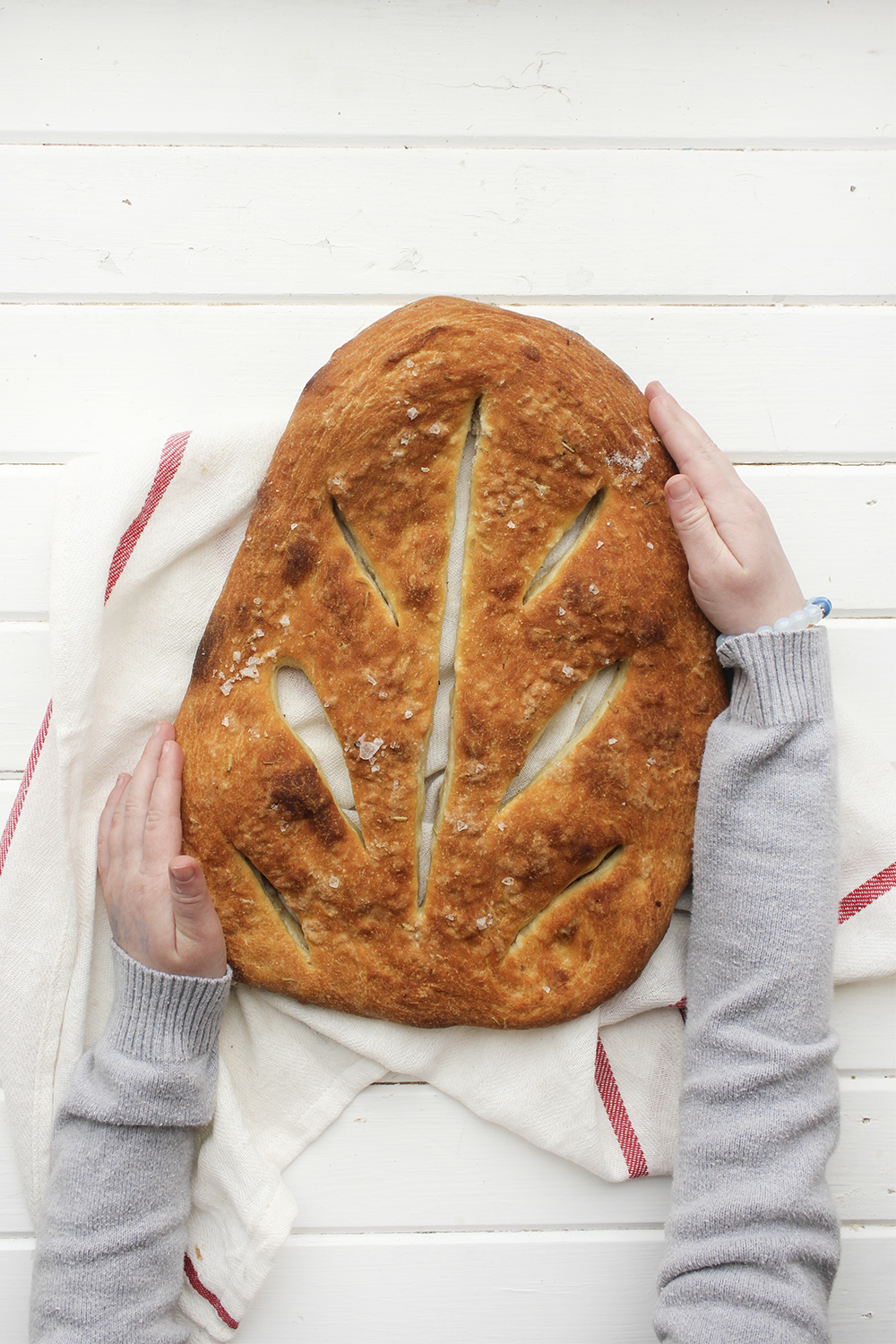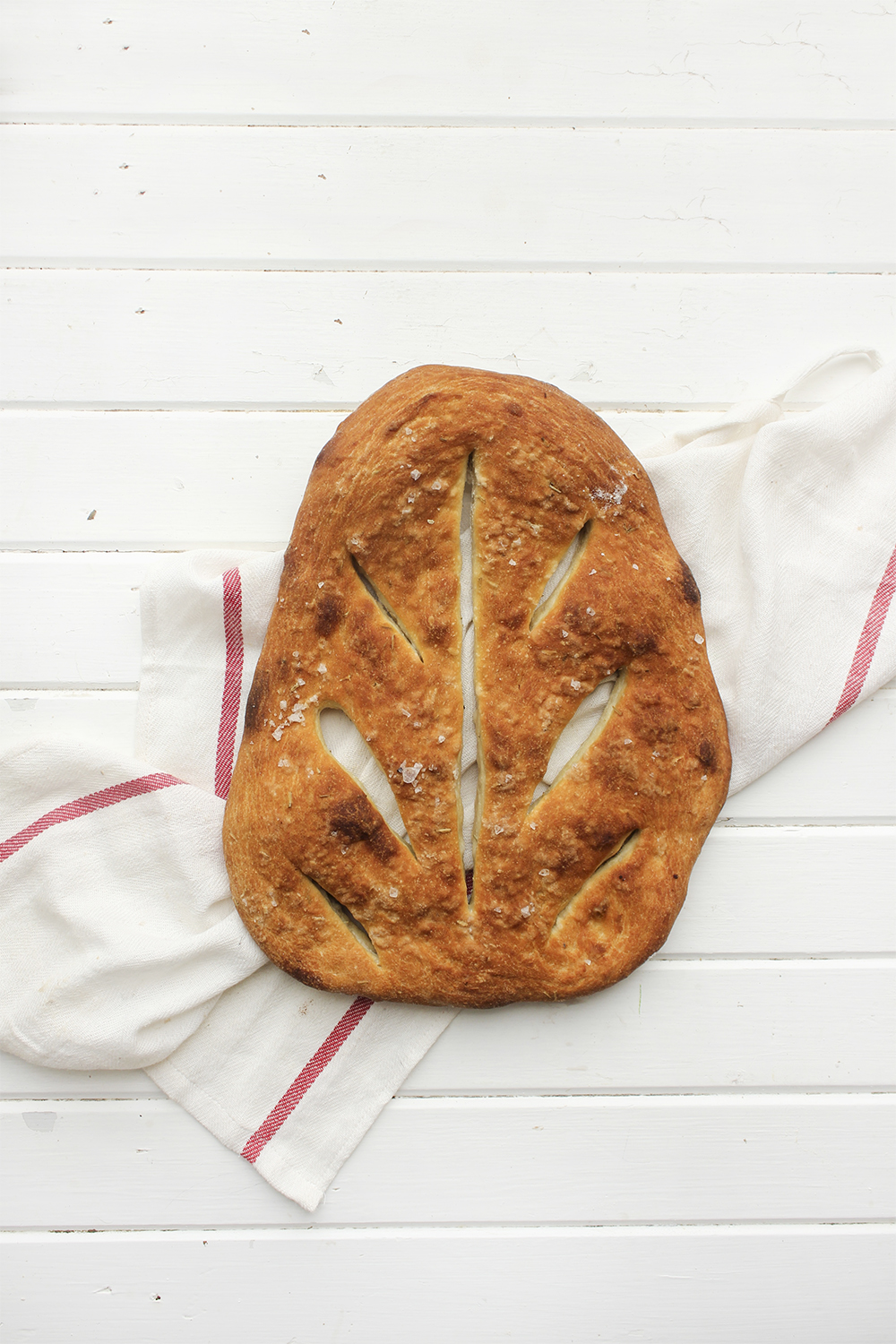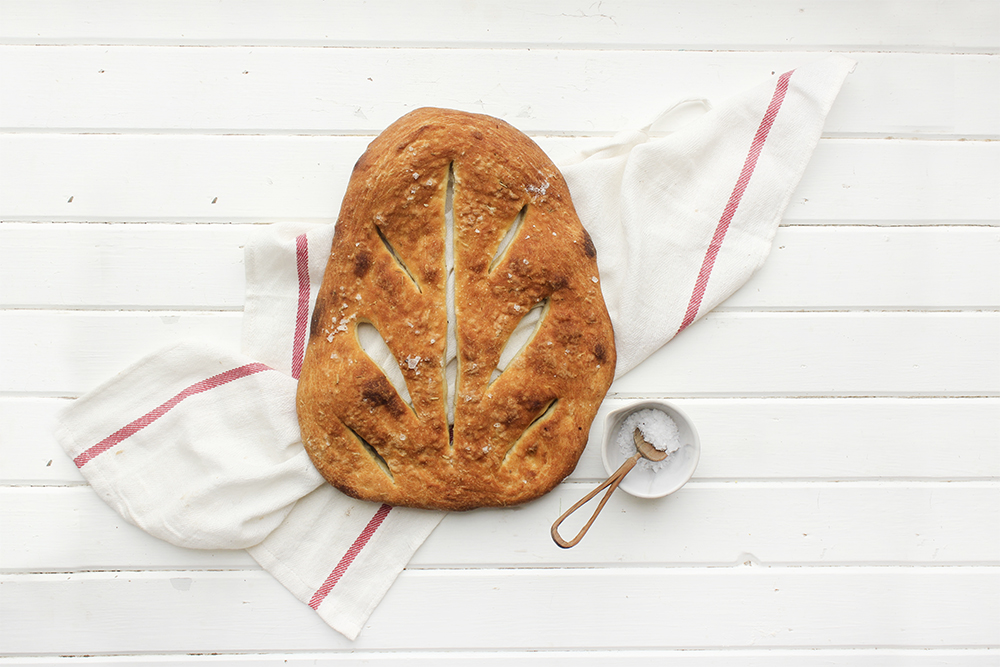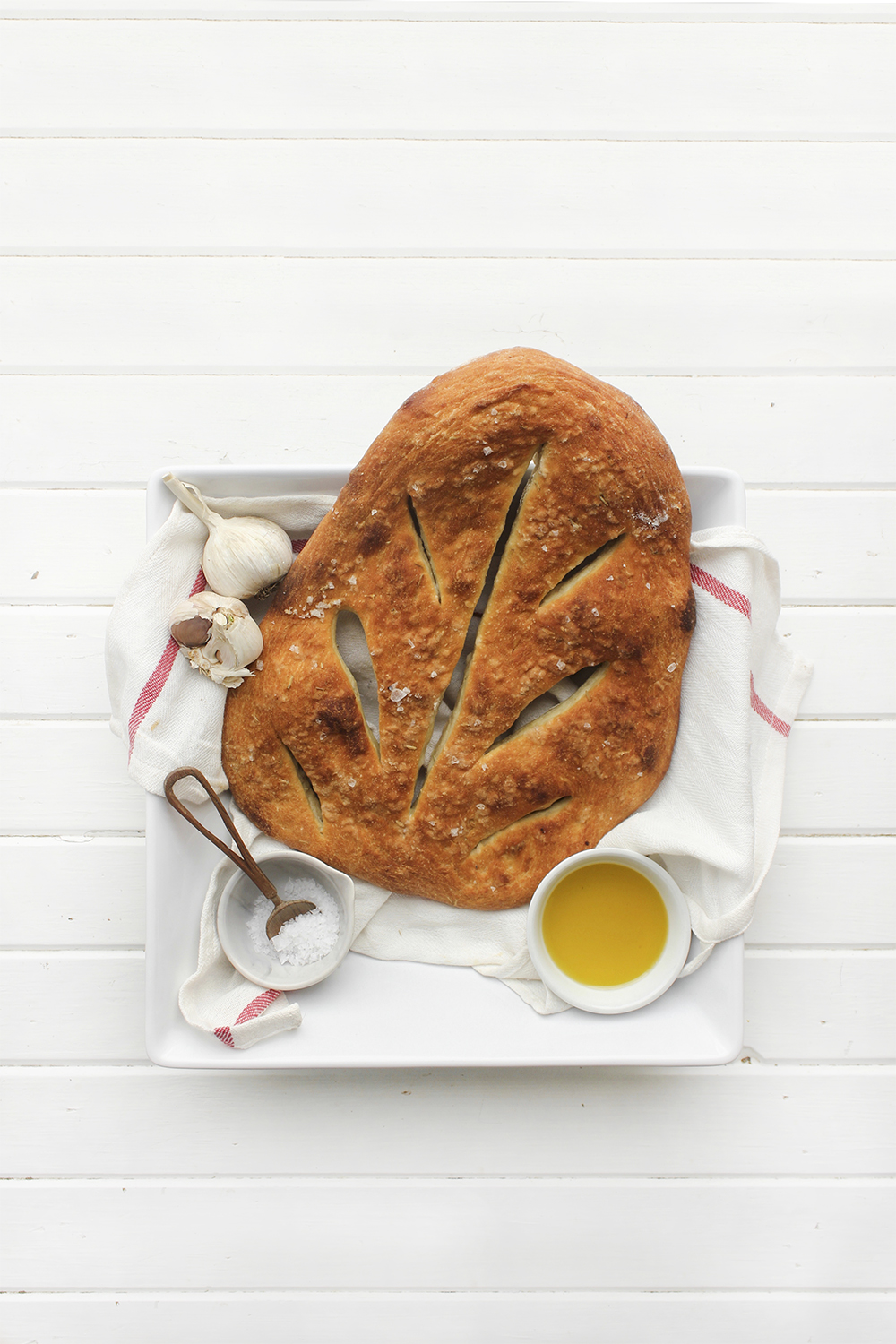
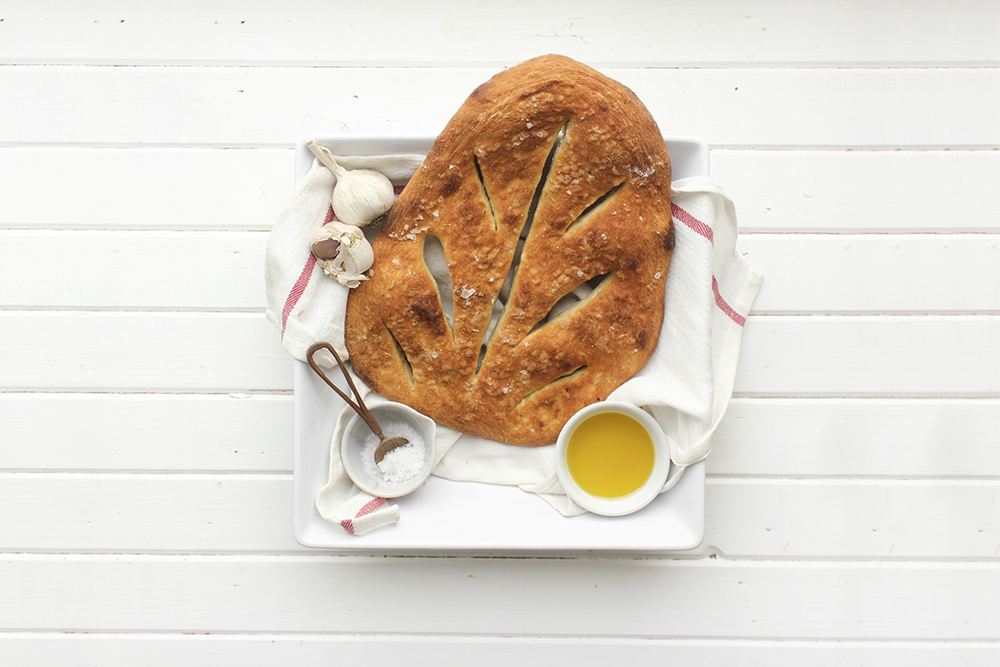
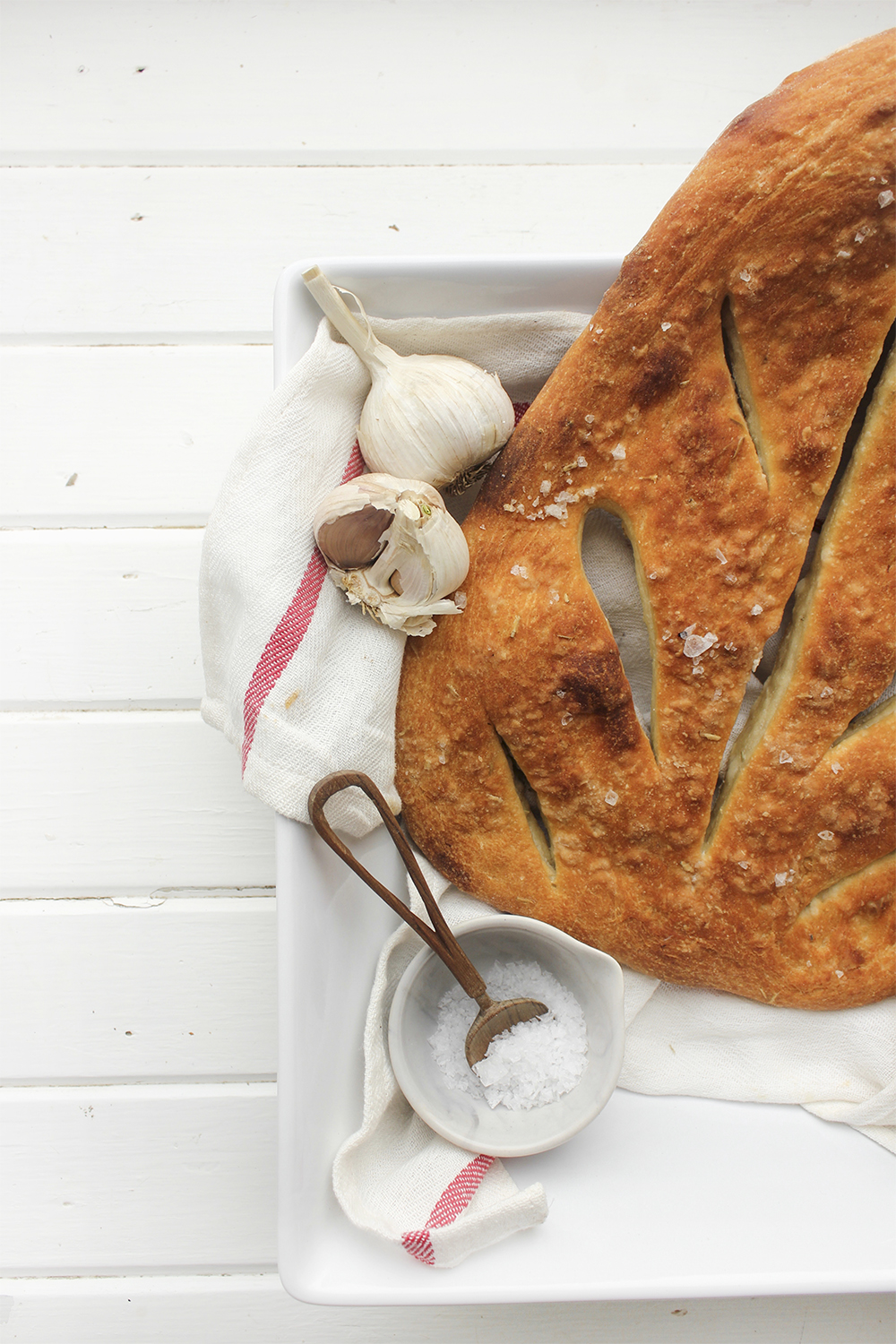
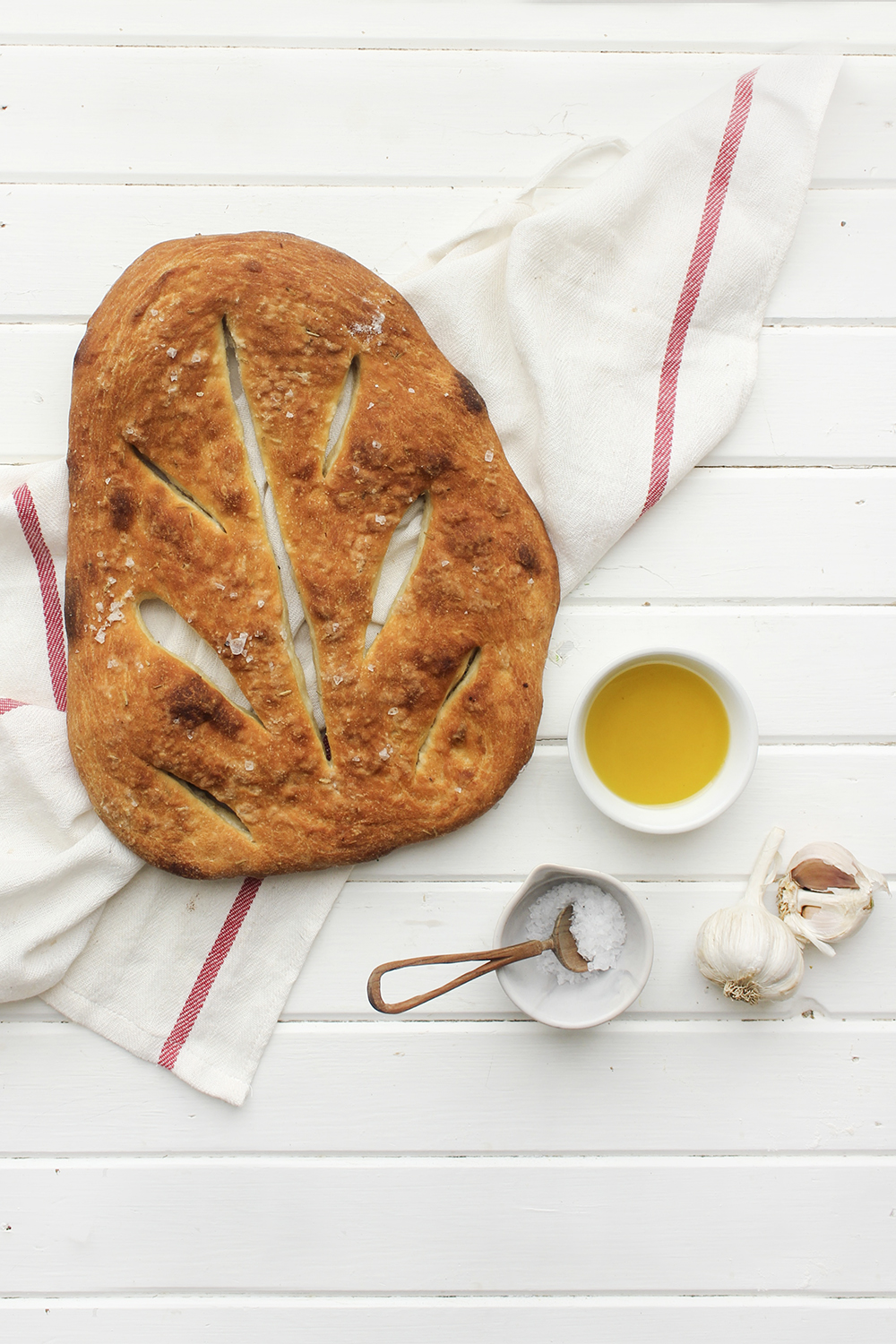
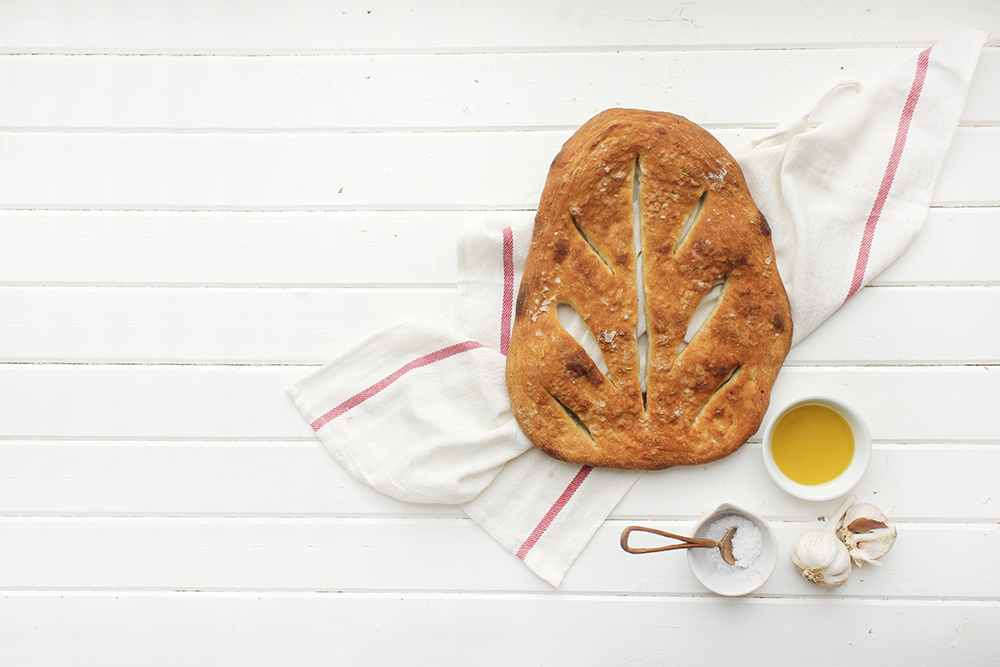
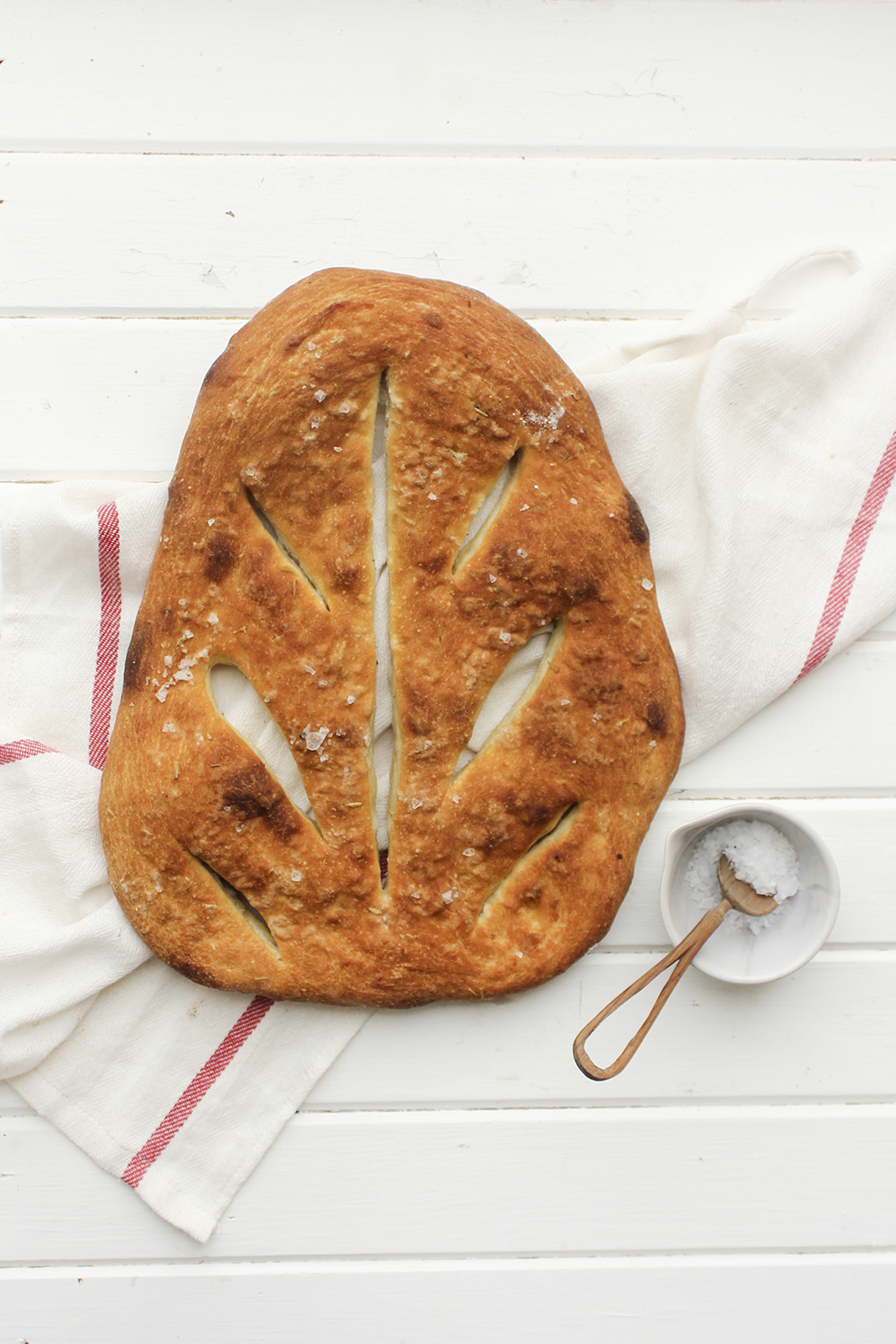
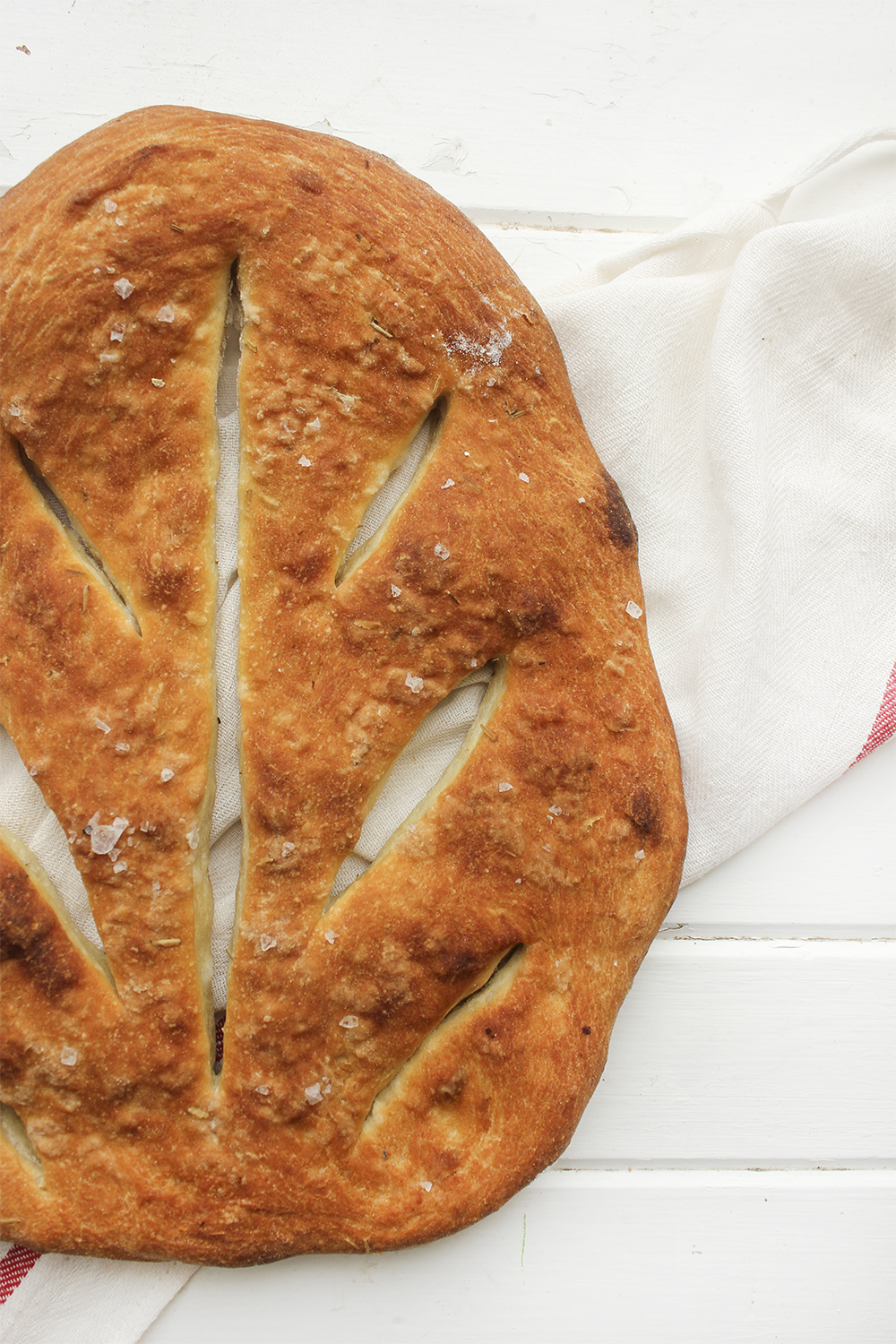
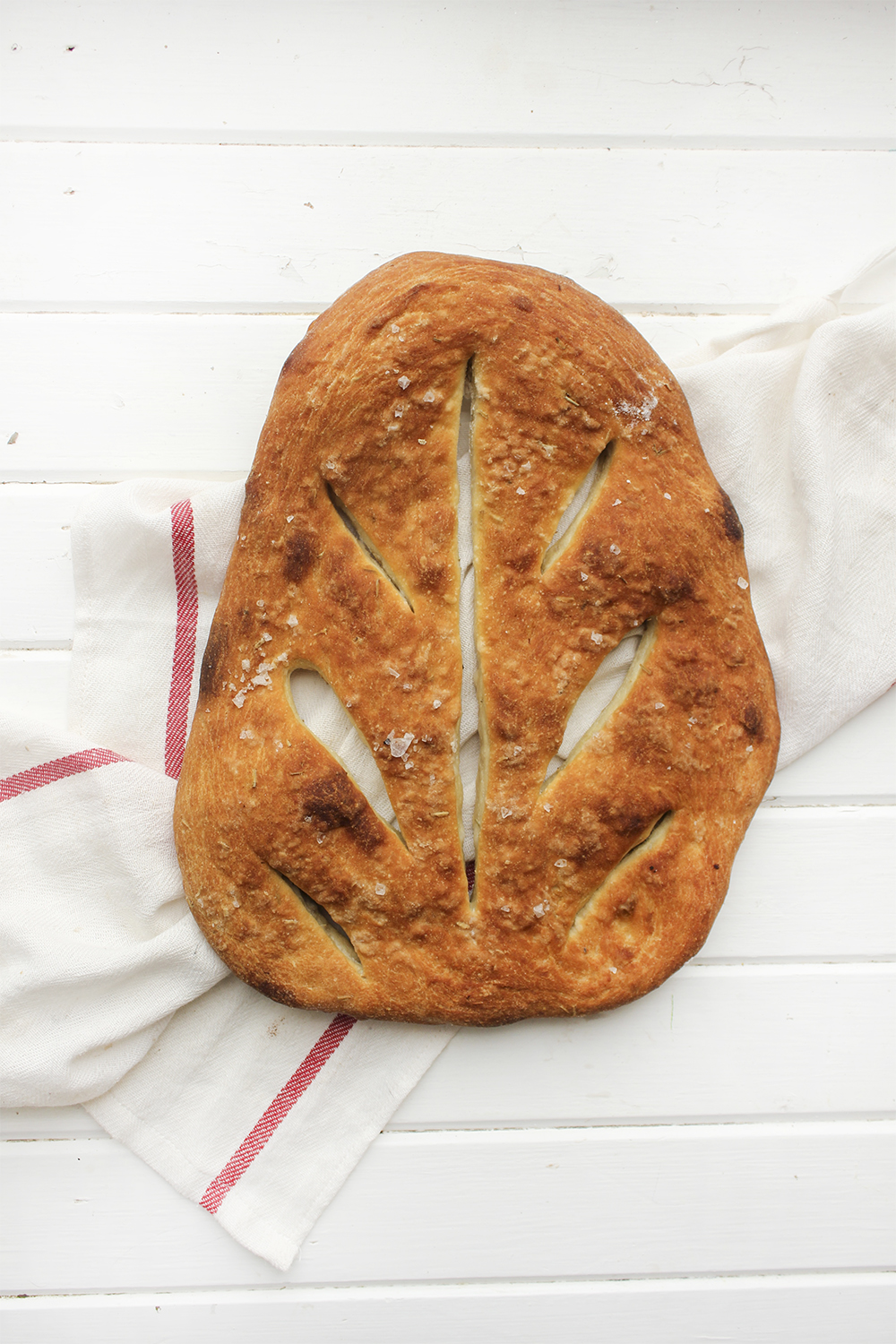
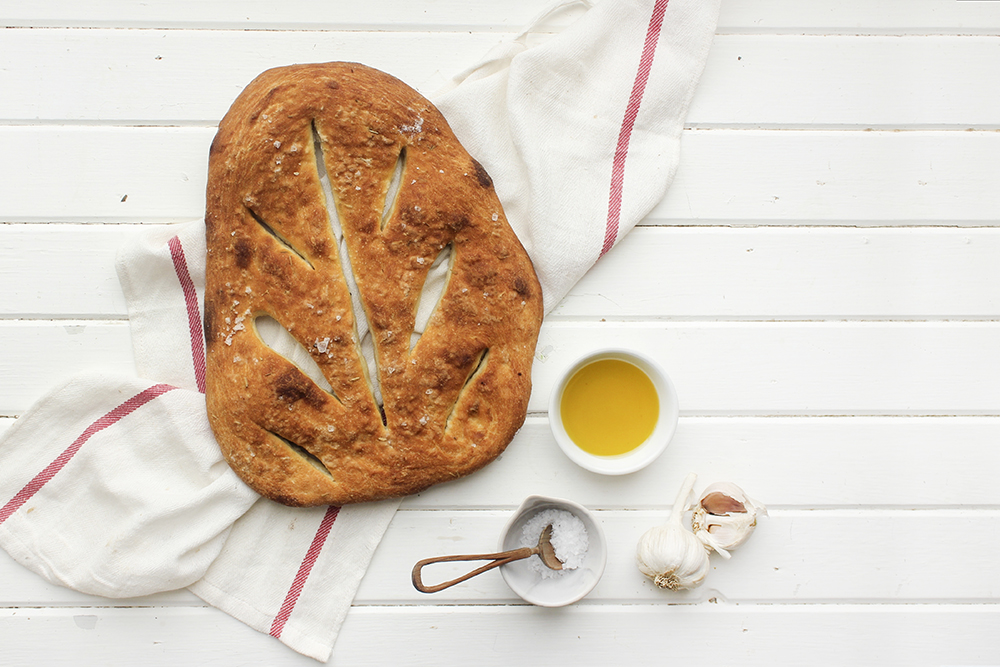
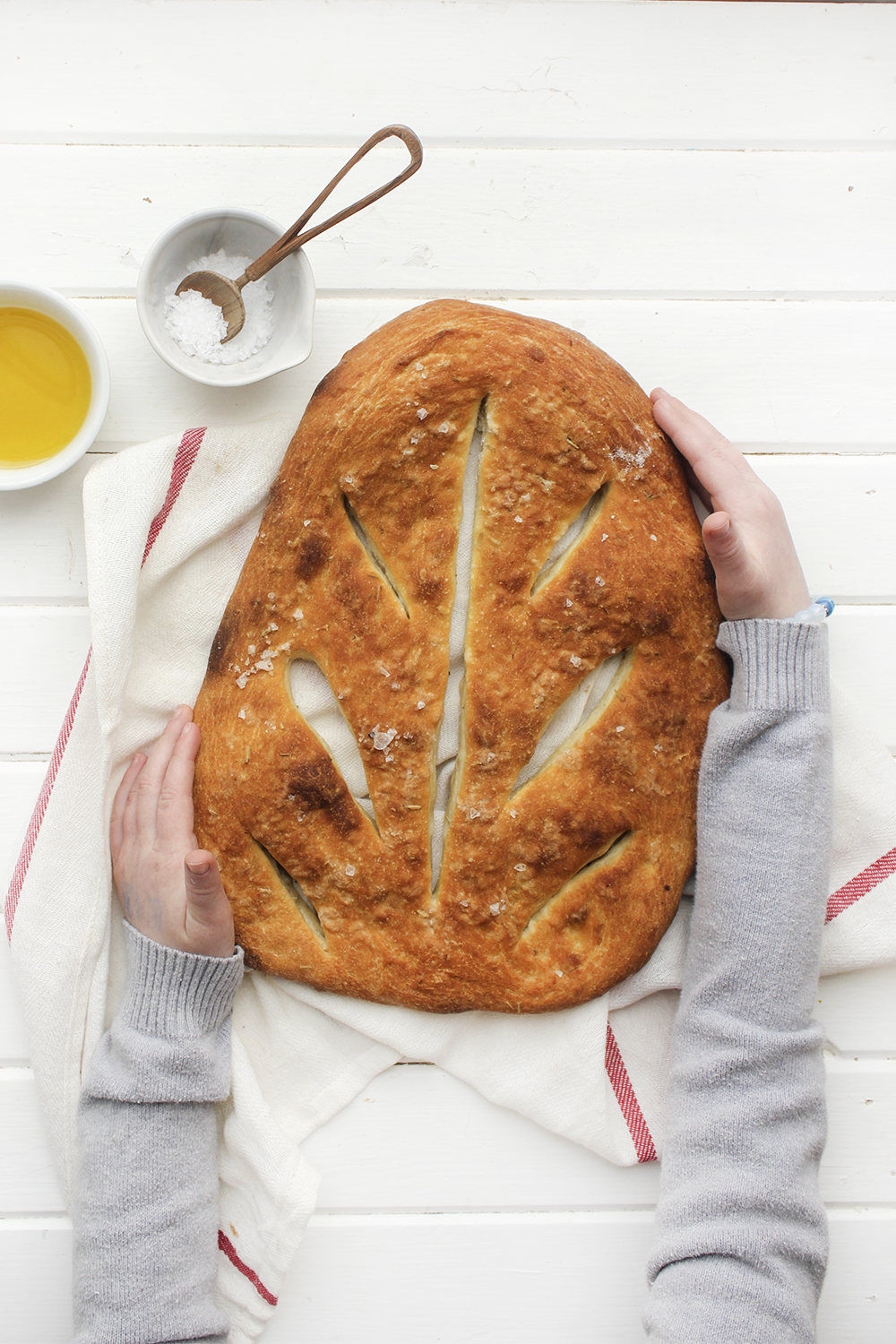
I had a completely different post planned for today, however I was craving some warm bread on these flippin’ cold days we are experiencing. So, I trashed my original idea to help cure my hibernation blues by taking the opportunity to experiment making a savoury fougasse.
I have made a couple of fougasse before with great success, but I have always stuck to a traditional recipe. To up my fougasse-game, I wanted to add in some flavours (which obviously would only result in me devouring the flat bread even quicker than normal…)
What is fougasse you ask?
Fougasse (pronounced foo-gaas) is a flat bread from Provence in the south of France, however its origin goes back to ancient Rome. Panis focacius was a Roman flat bread which was cooked in the ashes of a wood burning hearth. Later, these quick-cooking flat breads became a traditional way to test the temperature of a wood burning oven to tell if it was hot enough to bake the loaves of bread.
As the bread traveled and adapted to new regions, panis focacius eventually became what we know as focaccia in modern Italian, and the French version became fougasse in the south of France.
Fougasse is traditionally cut to resemble a leaf or sheath of wheat, with open areas within the bread. The open areas help the bread to bake incredibly quickly. They also make these loaves a crust lover’s best friend because they maximize the surface area of the bread that gets crusty. This crusty crackle and crunch is what makes fougasse distinctly different from its Italian relative, focaccia.
“Knead” I say more? (Oh yes! I went there)! Most recipes call for a one hour rise, but I let mine rise all afternoon to really infuse the rosemary and garlic into the dough. Aside from just wanting to bake, and eat it, I was quite surprised by how flavourful the bread was after such a long and steady rest!
We have a unique little olive oil shop not far from here called the Kingston Olive Oil Company. They literally have hundreds of different flavours of olive oil and balsamic vinegar inside their doors. Whenever I go, it takes me a solid hour to decide which oils and vinegars I am going home with. I have been wanting to bake more and more with their product so I used their wild mushroom sage olive oil in this recipe. If you do not have access to flavoured olive oils, you can simply use a good quality extra virgin olive oil instead.
ROSEMARY AND GARLIC FOUGASSE
makes one “leaf” loaf
ingredients
dough:
1 cup warm water (approximately 110F)
1/2 tsp. active dry yeast
1 tsp. sugar
1 tsp. sea salt
1 Tbsp. wild mushroom sage olive oil (or quality extra-virgin olive oil)
1 tsp. garlic powder
1 1/2 tsp. rosemary, chopped
1 1/2 cups all purpose flour
1/2 cup bread flour
olive oil for basting
coarse sea salt for topping
steps
mix:
In a medium bowl, combine the warm water, yeast, and sugar. Stir and let sit for 10 minutes while the yeast activates. Continue to mix in the salt and olive oil.
Add in the flours, garlic powder and rosemary and mix until a rough dough ball forms. Cover and let rise in a warm place for approximately 5-6 hours or until doubled in size.
Once the dough has doubled, preheat the oven to 450’F. Punch down the dough to release the air and then using a dough scrapper, form into a ball and turn it onto itself a few times (note that the dough will be quite sticky).
Flour a large piece of parchment paper and place the dough on top. Let the dough rest for 10 minutes, then generously flour the top. Using your hands (or a floured rolling pin) form the dough into a tapered leaf shape about 1/2″ thick.
Using either a pastry cutter or a sharp knife, cut the dough with several lines to form a leaf vein pattern. The dough should spread apart naturally on the cut lines, but you can also use your hands to space out the cuts.
Baste the top with a light coating of olive oil and sprinkle coarse salt.
Slide the parchment paper and dough onto a large baking sheet and bake in the preheated oven for 15 – 20 minutes, or until golden brown. Serve warm on it’s own or with olive oil and balsamic vinegar.
